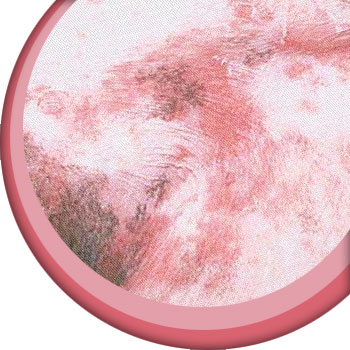Skin Disease
Skin disease is common in dogs and cats and can be a frustrating problem to manage. There are many possible causes of skin disease that may have similar symptoms and identifying the underlying cause can be difficult. Many of the conditions are also lifelong so may need to be managed rather than cured.
Causes
• Parasites – these include mites, fleas and lice.
• Infection – bacterial or fungal.
• Allergy – these can be to environmental substances such as grasses and pollens, or to food.
• Autoimmune – the body’s own defence system may attack components of the skin.
• Endocrine – various conditions may have some skin symptoms, for example hypothyroidism (an underactive thyroid gland, where the body doesn't produce enough thyroid hormone) and Cushing’s disease (when the body produces too much steroid hormone).
• Skin cancers.

Parasites, infections and allergies are probably the most common skin problems seen in dogs and cats. Skin infections may occur as a secondary problem to other conditions (the first condition makes the skin more susceptible to getting infected) and this may complicate diagnosis. Any skin condition that causes your pet to be itchy may result in secondary infection through repeated scratching and licking. Endocrine (hormonal) conditions may themselves include skin symptoms but can also make animals more susceptible to infection, for example diabetes mellitus (high sugar levels in the blood).
Symptoms
Signs of skin disease may be varied and dependent on the underlying problem but the most common are:
• Itchiness – scratching and licking, rubbing on furniture, carpets etc.
• Alopecia (hair loss).
• Red or sore looking skin.
• Scabs, spots and pustules.
• Ulcerated (raw) areas.
• Wet or purulent (pus) areas.
Diagnosis
Your vet will take a full history to try to identify the cause of the problem. They may ask about contact with any possible allergens, previous skin problems and what parasite treatment you are using for your pet. They may also ask about other signs such as appetite, thirst and general demeanour. These questions may not seem relevant but may help to rule out underlying conditions such as endocrine problems. They will perform a full clinical examination as well as looking at any skin lesions. It can however be hard to distinguish the cause of a skin problem just from its appearance so they may wish to carry out further tests. These may include:
• Taking skin scrapes and hair plucks to look for parasites. If parasites are seen then this may provide a diagnosis but they are very good at hiding which means just because they aren’t seen doesn’t mean they aren’t there! Find out more about Cytology
• Taking smears to look for bacteria and yeasts under the microscope. Find out more about Cytology
• Sending a swab to the laboratory for culture and sensitivity. This tells them which bacteria are present and which antibiotics will treat them most successfully. Find out more about culture and sensitivity
• Allergy testing.
• Routine blood tests and specific tests for endocrine conditions. Find out more about blood sampling
• Skin biopsies.
Treatment
The level and type of treatment for skin disease depends on the cause and severity of the problem but some common treatments include:
• An appropriate anti-parasitic treatment may be necessary to rule out parasites as diagnosis can be difficult (see above).
• Antibiotics are commonly indicated in skin conditions as there is often infection present even if it is secondary to another problem. Skin infections can often take a long course of treatment to fully clear therefore it is important to complete any course of antibiotics prescribed, and to let your vet know sooner rather than later if the condition is not improving or is not fully resolved at the end of the prescribed course.
• Medication to reduce irritation and itching.
• Medicated shampoos may help soothe skin and treat bacterial or fungal infections. Find out more about shampoos
• Topical creams may be useful for mild skin infections. Find out more about topical preparations
If there is a more complicated underlying condition such as an allergy or endocrine problem then your vet will discuss appropriate treatment for this as well as treating the initial skin symptoms.
Disclaimer: This website has been designed to offer information surrounding the use of antibiotics and infection control for pet owners. It does not replace advice from your veterinary surgeon. If you believe your pet is unwell or you have any questions relating to their treatment, please always contact your veterinary surgeon for advice.

